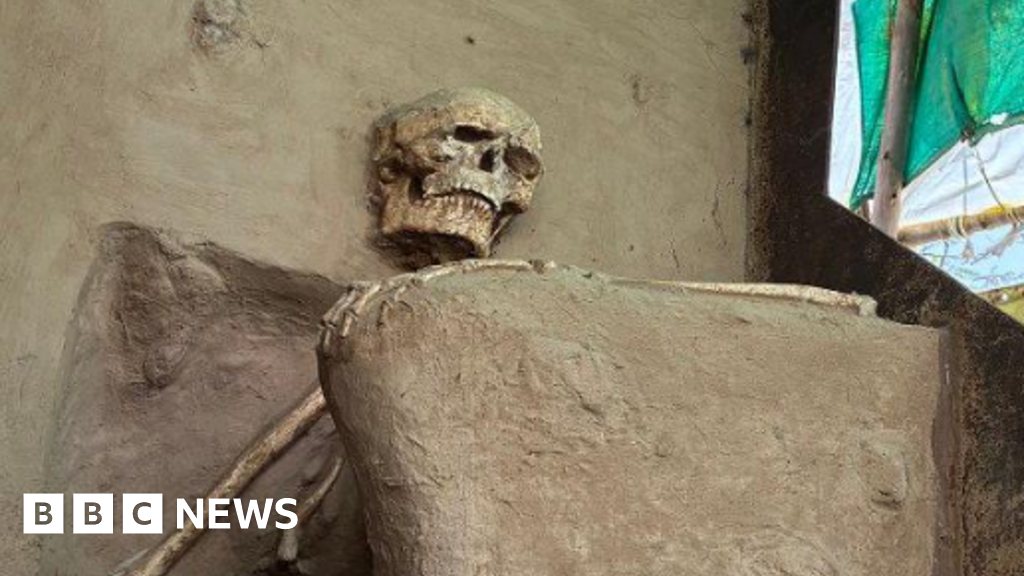Ancient Indian skeleton still waiting for home

Title: Ancient Indian Skeleton Still Awaiting Museum Home Amid Red Tape
An ancient Indian skeleton, potentially shedding light on Indian life a millennium ago, remains caught in the bureaucratic labyrinth of red tape and is yet to find a home in a museum.
The skeletal remains, unearthed in the northern Indian state of Uttar Pradesh, are believed to be nearly 1,000 years old. Their discovery could offer invaluable insights into the lifestyle, diet, health, and cultural practices of the people who inhabited the region during this period. However, the skeleton remains stored in a nondescript government facility due to administrative hurdles and the lack of a dedicated museum for its display.
The remains were discovered during a routine archaeological excavation conducted by the Archaeological Survey of India (ASI) in the Ghazipur district of Uttar Pradesh. They were found in a burial pit, along with other relics such as pottery shards, beads, and other artifacts that hint at a rich cultural past.
“The skeletal remains are a treasure trove of information that can help us understand the socio-cultural milieu of the period,” said Dr. Amita Kanaujia, a renowned archaeo-anthropologist. “They could reveal details about the dietary habits, diseases, and other aspects of life a millennium ago. However, to unlock this wealth of information, we need to conduct detailed studies and analyses, which have been hindered due to bureaucratic red tape.”
The delay in moving the skeleton to a museum is not only hindering scientific progress but is also putting the remains at risk. The facility where they are currently housed is not equipped to provide the controlled environment required to preserve such ancient artifacts.
“There is an urgent need to expedite the process and ensure the remains are transferred to a museum that can provide the right preservation techniques,” said Dr. Rakesh Tewari, a former Director-General of the ASI. “Any further delay could lead to deterioration of the skeleton, potentially erasing valuable historical evidence.”
The ASI has been engaged in seeking the necessary permissions from various government departments to move the skeletal remains to a more suitable location. However, the process has been slow, largely due to the absence of a clear administrative pathway for such unusual cases.
“The problem is that we don’t have a set protocol for dealing with such discoveries,” explained an official from the ASI who wished to remain anonymous. “We need a streamlined process that can ensure such treasures are quickly and safely moved to facilities where they can be studied and preserved.”
The case of this ancient Indian skeleton has underscored the need for a more efficient system to deal with archaeological discoveries in the country. Experts suggest that the establishment of a dedicated museum for archaeological finds, along with a clear set of protocols for dealing with such discoveries, could go a long way in preserving India’s rich historical heritage.
“The establishment of a dedicated museum would provide a safe home for such artifacts and would also provide an opportunity for the public to learn about our past,” said Dr. Kanaujia. “This skeleton is a tangible link to our ancestors and their way of life. It is a heritage that we must preserve for future generations.”
While the red tape continues to delay the process, the hope remains that the ancient Indian skeleton will soon find a home where it can reveal its secrets about life in India a thousand years ago. The skeleton’s saga underscores the importance of building infrastructure and streamlining processes to preserve and study India’s rich archaeological heritage.








